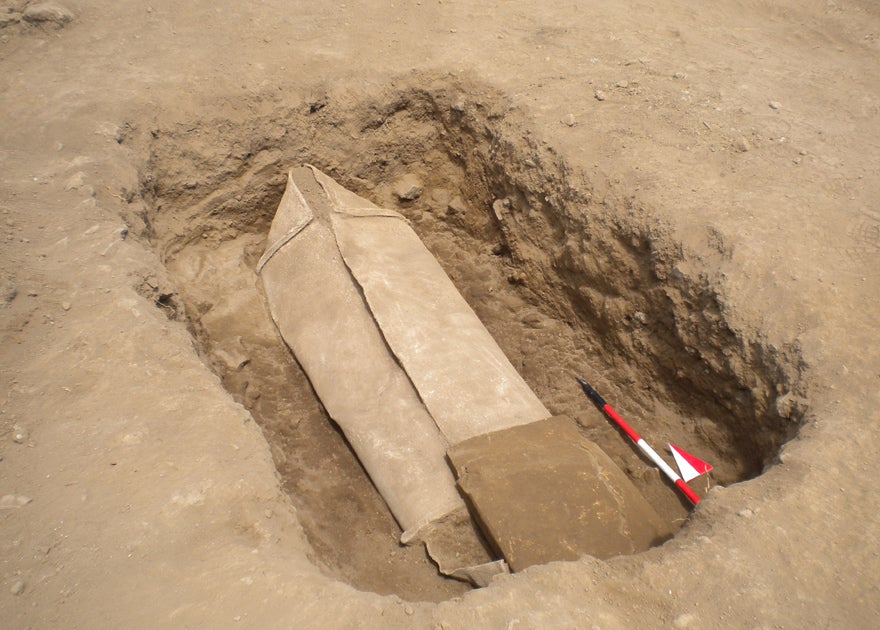Ancient lead sarcophagus contains Roman VIP

Who's in the Lead Coffin? “Very unusual and very intriguing” is how Nicola Terrenato from the University of Michigan describes a Roman-era lead coffin that has been uncovered in the ancient city of Gabii, 11 miles east of Rome.
The professor of classical studies is the leader of an archaeological project to excavate the site. He added: “It's definitely the most unusual finding of the campaign so far.”
The lead sarcophagus, weighing about 450 kg, was found during last summer's dig and is thought to date from the second to the fourth centuries AD. Researchers can't be more exact about the date until a series of tests are carried out in the coming months.
The location of the lead coffin, found in the central area of the city, suggests that by the second to fourth centuries AD, burials were taking place in an area that was previously inhabited. This suggests that Gabii was a shrinking city by this period.
At the moment very little is known about the occupant of the lead coffin. Any guesses as to the person's status and occupation are pure conjecture. Suppositions that he (or she?) could have been a bishop or a gladiator could be quite wide of the mark, although that the individual was someone of some importance seems like a fair guess.
What remains clear is that the burial is highly unusual, not least because the use of such an unusually large piece of lead would have been a great expense for the family of the deceased. Terrenato said: “It's a sheet of lead folded onto itself an inch thick. A thousand pounds of metal is an enormous amount of wealth in this era. To waste so much of it in a burial is pretty unusual."
Romans didn't often use coffins for burial and those that they did use were usually wooden. Terrenato adds: “There are only a handful of other examples from Italy of lead coffins from this age – the second, third or fourth century AD. We know of virtually no others in this region."
Lead coffins tend to preserve bodies well, so there is every hope that the contents may provide interesting information about the individual. However, the researchers are keen to avoid opening the coffin if possible, as this could damage the occupant's remains. Other techniques such as endoscopy, thermal testing and possibly an MRI scan will be tried first.
Terrenato hopes that some of these questions will be answered when the coffin and its occupant are transferred to the American Academy in Rome for testing, which will be carried out before the end of May. The team working on the project are currently putting in place the host of permits, safety procedures and insurance needed to get the coffin into the laboratory.
Two Child Burials Discovered
Several other interesting discoveries have emerged at the site, including the presence of two child burials dating from the eighth and seventh centuries BC.
According to Terrenato, these sites weren't unexpected because it was common during this time, when infant mortality was very high, to bury a child near the house, a bit like a pet, rather than bury them in an official graveyard. However, there are expensive items, such as bronze objects and pots, buried in the graves, suggesting the children came from a rich family. The household associated with the two graves has also been located and this will be excavated in the coming season, which begins in mid June.
During the eighth and seventh centuries BC, Gabii was a Latin city, populated by the ethnic group that eventually gave its language to the Roman civilization and was finally absorbed into the growing Roman territory. The city of Gabii would have emerged at the same time that ancient Rome was growing into a powerful kingdom and eventually a republic. But it seems that, by Augustan times, the city had gone into decline. While there doesn't seem to be any catastrophic or violent end for Gabii, Terrenato believes that it was slowly overshadowed by the thriving Roman metropolis. He said: “It's not easy to be a medium-sized city in the hinterland of a big city. Rome was attracting people away and this may have led to Gabii's decline.”
All Roads Lead to Rome
Evidence of a very early orthogonal road layout has also been observed at Gabii. Many Italian towns are laid out along orthogonal lines, but it's believed that the Romans didn't begin to plan cities like this until after their period of colonisation and expansion. This orthogonal layout pre-dates Rome's colonisation period. Terrenato explains that, since Gabii wasn't a colony, it would be expected to have grown organically and without a grid – as did ancient Rome.
The site of Gabii lies on undeveloped land 11 miles east of Rome in modern-day Lazio. The land is state-owned and the Italian State Archaeological Service (Soprintendenza di Roma) is facilitating and authorizing the project. Terrenato believes it's very lucky that there has been no post-Roman construction at Gabii because it gives archaeologists freedom to excavate without disturbing later buildings.
Collapse at Trajan's Baths in Rome due to heavy rain
Join our commenting forum
Join thought-provoking conversations, follow other Independent readers and see their replies
Comments
Bookmark popover
Removed from bookmarks